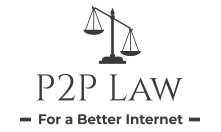4 Tips for SEO
SEO Rule 1: Ensure safety
 In the meantime, websites with SSL encryption have become a fixed standard, which must also be observed for the topic of search engine optimization. People also take this for granted. A site with an SSL certificate clearly says something about the site operator, namely that it has the security issue on its screen.
In the meantime, websites with SSL encryption have become a fixed standard, which must also be observed for the topic of search engine optimization. People also take this for granted. A site with an SSL certificate clearly says something about the site operator, namely that it has the security issue on its screen.
Google has confirmed HTTPS as a ranking signal and now Google Chrome even shows the following: “The connection to this website is not secure”. Would you trust such a website? I don’t think so. If you haven’t done so yet, make sure you switch to HTTPS sooner rather than later. By the way, Google sees it the same way and could punish your SEO efforts by downgrading your rankings and thus the organic visibility due to lack of security of your website.
SEO Rule 2: Optimize loading times
People don’t like to wait, search engines don’t either. Almost every user expects a fast loading page and is disappointed if this expectation is not fulfilled. And here, too, Google looks similar: Why waste valuable resources on slow pages? A slow website risks the success of your SEO work. Essentially, one should have the following points on the screen:
- Reducing HTTP Requests
- Reduce file sizes
- The correct sequence of resources
A first overview can be made with the Google “Mobile Website Speed Testing Tool”:
The beauty of this Google tool is that you get clear recommendations for action to make your site perform better.
Especially important: Take a close look at your competition. If your competitors have faster websites, they have a clear advantage when it comes to search engine optimization. You can find more information about faster websites here or here.
SEO rule 3: Optimize mobile display
 How important the topic of “mobile” is in connection with SEO should be clear at the latest with the statement that Google is taking the step to “mobile first” and no longer wants to distinguish between the desktop index and mobile index.
How important the topic of “mobile” is in connection with SEO should be clear at the latest with the statement that Google is taking the step to “mobile first” and no longer wants to distinguish between the desktop index and mobile index.
Tool providers also follow suit and analyze a special visibility index for mobile devices. It is not yet clear when this will actually take place. However, one should be prepared for it, rather too early than too late. Also, the good old Pagespeed Insight is now called testmysite and looks like that:
Here are rules of thumb for good mobile usability and thus SEO basics:
- Fast loading time (once again)
- Recognizable font sizes
- “Sausage finger” operability
If you want to deal a little more with the topics mobile and usability besides search engine optimization, we recommend to have a look here in our blog.
SEO Rule 4: Make content accessible
People are supposed to find certain content, so make it as easy as possible for them. Also here search engines like Google want again exactly the same. Ensure a clean information architecture and a flat hierarchy of your website, because this will definitely have a positive effect on your SEO results. Practically, that means:
- Share content with search engines
- Make every content accessible with 3-4 clicks
As banal as this sounds, check whether your website is approved for search engines at all. Often it is enough to set only a small hook or to forget and already the page flies from the Google index. Keyword: noindex.
Great rankings are no easter eggs or accidents: they come about for reasons. A so-called “site query” at Google can help: The 77,000 results shown in this example correspond to the number of pages in the Google Index. If this number roughly deviates from the number of pages you have stored in your CMS or shop system, then you should go one step further and crawl your entire website. Crawling means using a tool to try to follow every single link on your site.
You can also use a crawl to find out the click depth of your website, i.e. how many clicks are required to reach your content. A very good and cheap tool (for websites under 500 pages even completely free) for crawling a website is the so-called “Screaming Frog SEO Spider”.
If you find that most of your content can be reached with more than 3-4 clicks on average, you should optimize your internal linking. A good example of internal linking with regard to SEO is a typical Wikipedia article that links to other important content within the same website:
A flat hierarchy as well as a well-structured information architecture through internal linking increases the chance of a successful search engine optimization and thus of happy visitors many times over.
Law Firm Marketing Tips
Tip #1: Create a Web Page

For a law firm, the own website is the most important marketing instrument. Make sure you use this important marketing tool professionally and continuously. How old is your current website? Remember that an online year lasts only 3 months. The times when you created a website and don’t care about it afterward are over. Let us look after you professionally and ensure continuous further development.
Tip #2: Local SEO
Optimize your local presence in search results (Local SEO). Be sure to work with a reputable SEO company. These are the new Yellow Pages. And best of all, it’s all free. With an entry in Google Maps, you can be found for potential clients in your region. Try it out for yourself: Search for a lawyer or tax consultant in Google. What’s that? Are they displayed in your region? With Google My Business you are present on Google Maps and you can be found more easily for potential clients. Complete your contact information, picture material, and your offer.
Tip #3: Put your property in the limelight
Regional visibility is fundamental and important for lawyers and consultants. Many law firms have a location (office, law firm,…) that functions as a visible business card. It is, therefore, all the more important that the buildings are in good condition, there is no investment backlog and, depending on the trade, must be exemplary. The office should also be visible on the property. A company sign, a flag or a neon sign for the dark season of the year brings concrete reach for your law firm. Use your property for your marketing! There is no better advertising! Legal SEO is the most important thing for a local law firm and can also take care of your online reputation.
Tip #4: Business card with a picture
Pictures are fast shots into the brain! But how do you shoot with your business card? Most lawyers and tax consultants do not exploit the potential of their business cards. Business cards are easy to design, inexpensive and can be used at any time. Of course you will say now, it is clear: On the business card comes my name, address, and telephone number. But take a look at your desk or your business card case. How many business cards are there where you can no longer remember who that was again. People learn faster with pictures than with text. A photo on the business card increases the viewer’s memory. This will make you stand out better and stay in your memory longer. Whether you are a tax consultant, a lawyer or a chartered accountant. A picture on the business card will help you.
Tip #5: Pay attention to your online reputation
It is undisputed that recommendations are essential for an average law firm. In earlier times it was possible to secure one’s income through a manageable number of clients. In addition, advertising in the usual print media, e.g. the Yellow Pages, could occasionally generate new business. Nowadays this has become relative. Regular clients also use the Internet, which means that law firms are confronted with much greater competition. Googling alternative service providers has become part of everyday life for the average client. At this point, the presence of your own law firm is of the utmost importance. Have you ever googled your own name? The “Google My Business” entry of your company often appears here.
Regardless of whether you created it yourself or Google generates the data itself. This entry includes the possibility to give ratings and feedback to companies. If you don’t have any ratings, this is fine for now. But what happens if you get an evaluation from a dissatisfied client? Then there is only a negative 1-star rating. You should, therefore, encourage your customers to take advantage of this opportunity. In order to generate further valuations, three effective portals, in particular, have emerged for us: Facebook, Google, and Yelp. In order to generate new ratings, it is recommended to integrate buttons on your own website, which animate a rating and lead to the corresponding rating page of the portal. Below you will find our recommendation buttons as examples. If you liked the contribution, we would be pleased if you would recommend it to your friends and acquaintances!
BGH alleviates burden of proof
 The film industry has to accept a defeat at the German Federal Supreme Court (BGH) in its legal fight against illegal film exchanges in P2P exchanges. The highest German court made it clear that plaintiff rights holders must produce evidence against the alleged perpetrator of a copyright infringement. It is therefore unreasonable to expect connection holders who are supposedly correctly identified to search the computers of family members, for example, or to monitor the use of PCs in the family.
The film industry has to accept a defeat at the German Federal Supreme Court (BGH) in its legal fight against illegal film exchanges in P2P exchanges. The highest German court made it clear that plaintiff rights holders must produce evidence against the alleged perpetrator of a copyright infringement. It is therefore unreasonable to expect connection holders who are supposedly correctly identified to search the computers of family members, for example, or to monitor the use of PCs in the family.
The specific case concerned a lawsuit brought by Constantin Film, represented by the law firm WF, against a truck driver who allegedly illegally offered the film “Resident Evil: Afterlife 3D” for download in 2010 in an exchange market. WF had warned the owner of the connection. He should transfer 1106 Euro (506 Euros reimbursement and 600 Euros compensation). The person who received the warning had then submitted a modified cease-and-desist declaration, but had not paid. WF had sued the Brunswick District Court.
Reason: security gap
The defendant denied the act in court and assured the court that he had not been in the apartment at all at the time of the dispute. However, his wife also made use of the connection. In addition, the Telekom router Speedport W 504V used at the time of the crime showed a serious security gap, which Telekom did not close until 2012. If the WPS function had been activated, unauthorized third parties could have had access – he assumes that WPS had been activated in the preconfiguration that he had not changed. The defendant’s wife testified that she had not used any file sharing software and had not offered the film.
Both the local court and the Brunswick Regional Court (LG) dismissed WF’s complaint. The appeal against the LG judgement was finally dismissed by the BGH on 6 October 2016 (Az. I ZR 154/15 “Afterlife”). Now it published the written reason to its judgement and creates thereby more clarity in things secondary Darlegungslast and proof reversal – in favor of warned connection owners.
Protection of marriage and family
According to the BGH ruling, Constantin Film and the law firm WF went too far in this case. Contrary to their demands, the subscriber could not be expected to log his wife’s Internet use or search her PC for file-sharing software in order to avert his liability as a perpetrator. In the ruling, the BGH focuses on the conflict between the fundamental right to property and the protection of marriage and family against state intervention guaranteed by fundamental rights – with the latter clearly prevailing in the case constellation.
In addition the BGH gave a refusal to the primary assumption of the plaintiffs, a connection owner is to be taken as a culprit in adhesion,: It does not exist a general assumption that the connection owner is culprit of a copyright injury and which he would have to refute or shake, only because he is owner of the connection. This could be considered if there is prima facie evidence to support it. In the case of connections shared by several family members, however, this is not possible.
The BGH continues: “Since the use of the connection is an internal matter of the connection owner, of which the copyright owner is generally unaware, the connection owner has a secondary burden of disclosure in this respect, however. According to the Federal Court of Justice, it is sufficient here to state which persons other than the subscriber had access to the WLAN at the alleged time. Contrary to the plaintiff’s claim, it was “not the defendant’s responsibility to prove that there were circumstances that spoke in favour of liability against the intervention of the actual presumption”. Consequently, he was not obliged to determine the perpetrator himself, to examine computers of family members in the household or to determine attendance and absence times of all co-users.
Victory and milestone
For these reasons, the BGH rejected the appeal and also declared that, as stated by the LG Brunswick, the subscriber could not even be held liable as a perpetrator or a troublemaker. Constantin Film now bears the costs for the warning as well as all proceedings. “This is a further victory and milestone in the fight against the mass warnings in file-sharing proceedings”, explains lawyer Peter Smith, who claims to have brought the proceedings before the Federal Supreme Court. “The person who has been warned must therefore not interrogate his family members like a public prosecutor or search their computers.
